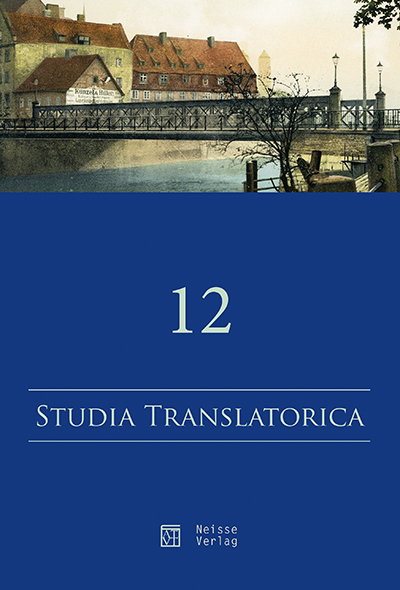O problemie tłumaczenia neologizmów na przykładzie bajki „The Smeds and the Smoos” Julii Donaldson oraz Axela Schefflera w jej niemieckim i polskim przekładzie
On translation of some neologisms on the example of the fairy tale „The Smeds and the Smoos” by Julia Donaldson and Axel Scheffler
and its German and Polish renditions
Author(s): Emil LesnerSubject(s): Translation Studies
Published by: Oficyna Wydawnicza ATUT – Wrocławskie Wydawnictwo Oświatowe
Keywords: neologisms; translation; translation techniques; child literature; poetry
Summary/Abstract: The author focuses his attention on the analysis of translation techniques of some neologisms in the fairy tale “The Smeds and the Smoos” and describes different problems that may occur while translating these lexical units. In the theoretical part the author focuses on the classification of neologisms and on the description of translation techniques with reference to Polish, German and English studies. In the paper, the methods of translating neologisms proposed by inter alia Peter Newmark, Anja Schüler, Zygmunt Tęcza and Piotr Sulikowski are discussed. Later, in the analytical part the focus is put on the description of the translation of neologisms contained in the children’s fairy tale “The Smeds and the Smoos”, written by Julia Donaldson and AxelScheffler, which is very popular in Poland and Germany. The translation units analyzed were grouped according to Peter Newmark’s typology and Piotr Sulikowski’s typology of techniques used with regard to translating neologisms. The examples described include the translation of neosemantisms, compounds and derivative forms. The paper concludes by emphasizing the fact that the Polish version of the English source text is more creative in translation than the German version. The translator who prepared the Polish text more often used less standard equivalents, which, however, were not less faithful to the original text. In the German translation, on the other hand, more omissions were found. It should be noted, however, that the number of pragmatically inadequate equivalents found in the German and Polish translations is the same, which leads to the hypothesis of a qualitative similarity between the Polish and German translations.
Journal: Studia Translatorica
- Issue Year: 2021
- Issue No: 12
- Page Range: 177-191
- Page Count: 15
- Language: Polish

